Mary Cronk Farrell's Blog, page 16
August 7, 2014
You Deserve Compassion
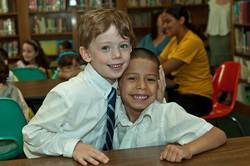 Thanks to Saint Francis Academy I’ve been trying to get my thoughts together on the difference between pity and compassion. We all know the difference when we feel it. We might sometimes enjoy a pity-party, but compassion is much more helpful.
Thanks to Saint Francis Academy I’ve been trying to get my thoughts together on the difference between pity and compassion. We all know the difference when we feel it. We might sometimes enjoy a pity-party, but compassion is much more helpful.Most all of us are taught that we should be kind and compassionate to others. Few of us learn how to be kind and compassionate to ourselves. Perhaps we think being hard on ourselves will whip us into shape, get us to work harder, grow a thick skin or just deal.
My guess is that it helps us avoid pain. Admitting our disappointment, hurt feelings, lost hopes, grief or helplessness makes us extremely vulnerable. A vulnerable person deserves compassion. When we don’t allow ourselves to be vulnerable, all we have access to is pity.
 Needs Compassion! Courtesy of Nate I don’t know how this sounds in your life, but it can go like this for writers:
Needs Compassion! Courtesy of Nate I don’t know how this sounds in your life, but it can go like this for writers:The publishing business is so unfair to writers. I have to wait so long to hear back from editors and agents. So much of my books success is out of my control. There’s no other job like this. That’s pity.
Compassion might sound like this. I’ve poured out my soul, revised again and again, and now I’ve sent it off to someone who might not like it. That’s really hard. Especially because I have this tiny hope that they’ll love it. Every rejection is so personal and painful.
It takes courage to be a writer. Especially when you have to wait so long for the verdict--will they or won’t they? But lots of people don’t have control over aspects of their work. Doctors? Third grade teachers? Waitresses? We’re all in this together. We go to work each day and stuff is out of our control. I can focus on what I can control and make my best effort. Yes, it’s hard. I’ll let myself have a good cry, and then I’ll get to work.
Pity: my critique partner totally missed the point of my story. She probably just skimmed it. Maybe she’s jealous because I write better than she does. That agent I met last spring didn’t get my writing either. I deserve better.
Compassion: Wow. I thought my writing was so clear. I thought this was the best story I’d ever written. It’s painful to realize it wasn’t as good as I thought. That means more work. It’s hard to keep going, hard to keep believing in myself when I get no outside affirmation. But I know writing isn’t easy for anyone. Even the most successful authors have moments of disappointment and isolation. It doesn’t mean I’m a poor writer or a bad person. These painful feelings are part of the process. I’m going to allow myself to be sad today. Tomorrow I’ll give that story another try.
Pity is an emotional response based on fear and misinterpretation.
Compassion has been defined as coming alongside another human being. The passion at the end of the word means that, somehow, the heart is deeply engaged. What do you say, we try to deeply engage our hearts for our own benefit? Life serves us some pretty crappy stuff now and then. If we can’t show ourselves a little compassion, it’s pretty hard to show it to others.
Agree? Disagree? What do pity and compassion look like where you live and work?Photos courtesy of Flicker. License here.
Published on August 07, 2014 13:12
July 25, 2014
World War II Flight Nurse remembers...
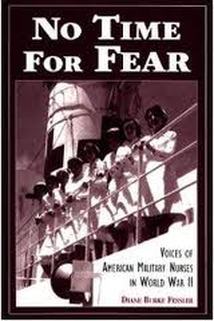 One of the best things about having a published book out there in the world is the way in which it connects me to strangers and their stories. Here's a few words from an e-mail I received two weeks ago about an American flight nurse that served in the Pacific in World War II.
One of the best things about having a published book out there in the world is the way in which it connects me to strangers and their stories. Here's a few words from an e-mail I received two weeks ago about an American flight nurse that served in the Pacific in World War II."Charlotte McFall Mallon is 97 now....last time I visited her she showed me your book, Pure Grit, that a niece had sent her. She said she cried while reading it."
Charlotte tells of her personal connect to the POW nurses in her own words in the book, NO TIME FOR FEAR, by Dianne Burke Fessler.
One day I was in Saipan, waiting for patients to come in from various places, when the chief nurse came into the barracks and asked us to get all the fresh food, fruit or anything we could find. She told us we were going to put on a buffet, and we couldn't imagine what could be happening because our food was so awful. She wouldn't tell us why, so we guessed that some VIP was coming from Washington.
All kinds of food was brought together, because everyone had been getting it sent from home. We took it to the hangar, where the mess sergeants had made potato salad, and put out all the food. We waited for the planes, and pretty soon two of them landed and taxied up to the hangers. They were not the usual evacuation planes, either, but the "plush" ones that VIPs traveled in. When the doors the doors opened, the stairs were wheeled to the planes, and the girls who had been prisoners in the Philippines came out.
 U.S. Army Nurses on their way home after being liberated for prison camp in the Philippines, Feb. 1945. Courtesy U.S. Center for Military History
U.S. Army Nurses on their way home after being liberated for prison camp in the Philippines, Feb. 1945. Courtesy U.S. Center for Military History  Flight Nurse Charlotte McFall, center. I can never tell this without crying. We knew immediately who they were. They were thin as rails. They had been given uniforms, which didn't fit, and their hats were down over their noses. The band struck up The Star Spangled Banner, and there wasn't a dry eye anywhere, everybody was crying. We all greeted them, and ushered them to the buffet. The centerpiece was a sheetcake that was decorated red, white and blue, and read Welcome Home to the Good Old USA. They were thrilled to pieces.
Flight Nurse Charlotte McFall, center. I can never tell this without crying. We knew immediately who they were. They were thin as rails. They had been given uniforms, which didn't fit, and their hats were down over their noses. The band struck up The Star Spangled Banner, and there wasn't a dry eye anywhere, everybody was crying. We all greeted them, and ushered them to the buffet. The centerpiece was a sheetcake that was decorated red, white and blue, and read Welcome Home to the Good Old USA. They were thrilled to pieces.Charlotte, a nurse with the 828th Medical Air Evacuation Squadron, arrived for duty in the Pacific in October 1944. She and other flight nurses tended patients in planes that picked up wounded near the front lines. Though her plane could have been shot down over enemy territory, her closest call came during a routine landing on a short runway on the Island of Eniwetok.
She explains, The nose wheel of the C-54 hit the pile of coral, flipped us over on one wing, spinning us around and the plane burst into flames.
Another nurse, Mary Creel, and I jumped out through the flames. I escaped burns, but sprained my ankle, while the other nurses, crew and some of the passengers were injured worse. Mary and Georgia Dixen suffered burns.
Courtesy NO TIME FOR FEAR, by Dianne Burke Fessler
I'd been asked to carry some secret papers to Tinian on that flight, which we weren't supposed to do, and had to be concerned about that, as well as helping the people who were injured.
Tinian Island was the departure point of the bombers Enola Gay and Bockscar, carrying the atomic bombs named Little Boy and Fat Man that were dropped on Hiroshima and Nagasaki.
Published on July 25, 2014 09:32
July 10, 2014
What's your "flight behavior"?
While driving across the state, I started listening to a book on tape, FLIGHT BEHAVIOR, a novel by Barbara Kingsolver.
I haven't finished it yet, but it is sure giving me a lot to think about.
The protagonist is Dellarobia, a young Appalachian woman who discovers some 15-million monarch butterflies have come to winter in the forest on her in-laws property. There are so many they turn the valley orange, as if it's on fire.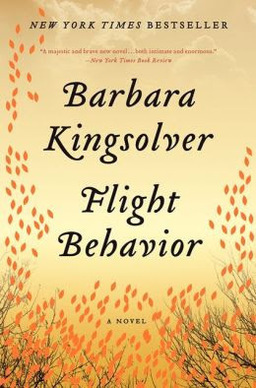
 It's natural for North American monarchs to migrate south and hibernate on trees for the winter, (see a photo here) but in
Mexico, not Tennessee
.
It's natural for North American monarchs to migrate south and hibernate on trees for the winter, (see a photo here) but in
Mexico, not Tennessee
.
The book has mixed reviews and it moves slowly in the beginning. It might pay to listen to the book rather than read it. While the butterflies seem like a miracle at first, this story rarely strays from “real” life.
From The York Times review of the book: “Throughout her fiction, the exigencies of work, and the classes of people who do that work, have been among Kingsolver’s great subjects. Here she deftly handles the relentless labor of sheep shearing, yarn dying, even child minding, with all those sticky fingers and sodden, sagging diapers.”
As a writer, I have to say I love FLIGHT BEHAVIOR. Kingsolver's original use of language really grabs me. Here are a couple of examples.
Dellarobia walks under a "mess of dirty white sky like a lousy drywall job."
 She reflects on how she was once a rebel girl with plans to get out of this town, but now, "Her boldness had been confined to such tiny quarters, it counted for about as much as mouse turds in a cookie jar."
She reflects on how she was once a rebel girl with plans to get out of this town, but now, "Her boldness had been confined to such tiny quarters, it counted for about as much as mouse turds in a cookie jar."
The church choir sings a hymn, "dragging it like a plow through heavy clay".
I also covet Kingsolver's depth of characterization. In this story of "poor backwoods hillbillies", privileged college students, fundamentalist Christians and environmentalists--you see only human beings. Once you get to know them their labels, don't fit quite so well in your mind.
She focuses her skill at characterization on the issue of climate change to make clear the need for people to talk to each other, even when they disagree.
The story makes me aware I sometimes judge that I already know what some people are going to say. I don't want to listen because I think they're misinformed, ignorant of the facts, ruled by fear or whatever. I can go off on my own little "flight behavior".
And yet, I wish people who disagree with me would listen when I talk. I want them to respect my experience and value how my experience has informed me.
One thing I know is that we learn nothing when we only listen to people who tell us what we already know.
I want to be a person who is learning. I want my life to be about growing. Growing wiser, growing more compassionate, growing more effective in the actions I take and in the choices I make.
I don't want to live motivated by fear. I want to be courageous, not threatened by someone who disagrees with me. I want to be wise and strong enough to trust that others are able to work out the way of things for themselves, just as I am.
In the current climate of division, it's difficult to believe we will lay down our swords and shields and work together to solve the world's problems. My grip is loosening on mine. And that's were it starts.
The books title calls to mind a number of different metaphors. My favorite is the idea of who we humans behave when we're afraid. What about you? I'd love to hear from you. Whether you like the book or not. :)
I haven't finished it yet, but it is sure giving me a lot to think about.
The protagonist is Dellarobia, a young Appalachian woman who discovers some 15-million monarch butterflies have come to winter in the forest on her in-laws property. There are so many they turn the valley orange, as if it's on fire.

 It's natural for North American monarchs to migrate south and hibernate on trees for the winter, (see a photo here) but in
Mexico, not Tennessee
.
It's natural for North American monarchs to migrate south and hibernate on trees for the winter, (see a photo here) but in
Mexico, not Tennessee
. The book has mixed reviews and it moves slowly in the beginning. It might pay to listen to the book rather than read it. While the butterflies seem like a miracle at first, this story rarely strays from “real” life.
From The York Times review of the book: “Throughout her fiction, the exigencies of work, and the classes of people who do that work, have been among Kingsolver’s great subjects. Here she deftly handles the relentless labor of sheep shearing, yarn dying, even child minding, with all those sticky fingers and sodden, sagging diapers.”
As a writer, I have to say I love FLIGHT BEHAVIOR. Kingsolver's original use of language really grabs me. Here are a couple of examples.
Dellarobia walks under a "mess of dirty white sky like a lousy drywall job."
 She reflects on how she was once a rebel girl with plans to get out of this town, but now, "Her boldness had been confined to such tiny quarters, it counted for about as much as mouse turds in a cookie jar."
She reflects on how she was once a rebel girl with plans to get out of this town, but now, "Her boldness had been confined to such tiny quarters, it counted for about as much as mouse turds in a cookie jar." The church choir sings a hymn, "dragging it like a plow through heavy clay".
I also covet Kingsolver's depth of characterization. In this story of "poor backwoods hillbillies", privileged college students, fundamentalist Christians and environmentalists--you see only human beings. Once you get to know them their labels, don't fit quite so well in your mind.
She focuses her skill at characterization on the issue of climate change to make clear the need for people to talk to each other, even when they disagree.
The story makes me aware I sometimes judge that I already know what some people are going to say. I don't want to listen because I think they're misinformed, ignorant of the facts, ruled by fear or whatever. I can go off on my own little "flight behavior".
And yet, I wish people who disagree with me would listen when I talk. I want them to respect my experience and value how my experience has informed me.
One thing I know is that we learn nothing when we only listen to people who tell us what we already know.
I want to be a person who is learning. I want my life to be about growing. Growing wiser, growing more compassionate, growing more effective in the actions I take and in the choices I make.
I don't want to live motivated by fear. I want to be courageous, not threatened by someone who disagrees with me. I want to be wise and strong enough to trust that others are able to work out the way of things for themselves, just as I am.
In the current climate of division, it's difficult to believe we will lay down our swords and shields and work together to solve the world's problems. My grip is loosening on mine. And that's were it starts.
The books title calls to mind a number of different metaphors. My favorite is the idea of who we humans behave when we're afraid. What about you? I'd love to hear from you. Whether you like the book or not. :)
Published on July 10, 2014 20:21
July 3, 2014
Let Freedom Ring! How one song reveals 250 years of America's fight for liberty & justice
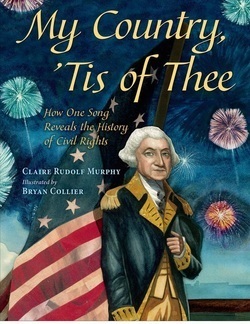 Today, please welcome Author Claire Rudolf Murphy. I invited her to tell you about her new book which combines her love of music with her passion for freedom and justice for all people. Claire...
Today, please welcome Author Claire Rudolf Murphy. I invited her to tell you about her new book which combines her love of music with her passion for freedom and justice for all people. Claire...When my dear friend Mary asked me to post on the Fourth of July I thought about the courage of the many Americans featured in my new book MY COUNTRY 'TIS OF THEE: HOW ONE SONG REVEALS THE HISTORY OF CIVIL RIGHTS, illustrated by Bryan Collier.
They lived out courage as they stood up for equal rights, using protest verses to the famous melody to plea for their cause. The courage of women in the 18th, and even 19th centuries, who wrote anonymous verses published in newspapers, demanding liberty for all Americans, not just white land-owning males. They knew if discovered they could be beaten, even divorced by their husbands or fathers for speaking out.Two hundred years of courageous slaves who ran away, facing possible death on their quest to freedom.
 The soldiers in the Revolutionary, Civil and all our many wars who had the courage to face guns to protect all our freedoms and the women and children who kept the home fires burning. The decades of labor protestors, men, women and children, with the courage to march and picket for better wages and working conditions, at cost to their jobs and safety of their families.The courage of the suffragists who marched in front of the White House, demanding the right to vote. When arrested, they almost died in prison and those that stayed home but almost lost their children, their husbands, their security.The courage of Native American activists like Zitkala-Sa who lived on this land first, but were treated like second-class citizens and sent to reservations until allowed to become American citizens in 1925. The courage of opera singer Marian Anderson who stood in front of the Lincoln Memorial in 1939 and performed for 75, 000 people when the Daughters of the American Revolutions wouldn’t allow her to sing inside Constitution Hall because of the color her skin.
The soldiers in the Revolutionary, Civil and all our many wars who had the courage to face guns to protect all our freedoms and the women and children who kept the home fires burning. The decades of labor protestors, men, women and children, with the courage to march and picket for better wages and working conditions, at cost to their jobs and safety of their families.The courage of the suffragists who marched in front of the White House, demanding the right to vote. When arrested, they almost died in prison and those that stayed home but almost lost their children, their husbands, their security.The courage of Native American activists like Zitkala-Sa who lived on this land first, but were treated like second-class citizens and sent to reservations until allowed to become American citizens in 1925. The courage of opera singer Marian Anderson who stood in front of the Lincoln Memorial in 1939 and performed for 75, 000 people when the Daughters of the American Revolutions wouldn’t allow her to sing inside Constitution Hall because of the color her skin.  The courage of Martin Luther King, Jr. who kept speaking out, over and over, even though he knew his life was in danger. When he spoke at the March on Washington on August 28, 1963, his voice carrying across the crowds, “Let freedom ring, let freedom ring, let freedom ring.”
The courage of Martin Luther King, Jr. who kept speaking out, over and over, even though he knew his life was in danger. When he spoke at the March on Washington on August 28, 1963, his voice carrying across the crowds, “Let freedom ring, let freedom ring, let freedom ring.” Our moments of courage may not be as brave or big as though above, but I believe that to be a citizen means to live with courage, allowing every American the right to speak and live in safety. Fifty years ago the Freedom Summer volunteers, black and white, had courage while registering voters in Mississippi. They risked it all so “freedom could ring.”
Talking about my new book and encouraging teachers to get their students to write new verses to this famous song may not be courageous. But these new verses give me hope that the next generation will “let freedom ring.”
Spokane teacher Patty Driscoll’s 5th and 6th graders wrote this new verse with the help of their music teacher:
My country ‘tis of thee
Let us be bully-free
No teasing found.
We are not all the same
Stop causing all their pain
Differences are not to blame
Freedom all around.
Claire invites classes and individual students to write new lyrics for a cause they believe in. Check out Claire's website for contest details.
Winners will be posted on Claire's website and become eligible to win a book or poster of Aretha Franklin singing at President Obama's inauguration. The contest is open September 1 - October 30th, 2014. Enter here...
In parting, Claire says, Sing one of your favorite patriotic songs this day. Let freedom ring.
Sounds like a great way to celebrate! Thanks, Claire.
Published on July 03, 2014 23:43
June 26, 2014
If Reading is so Important...Why are we Failing Our Boys?
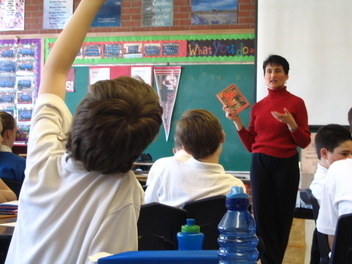 You might not be surprised that boys don't read as much as girls. You might even think that's just the way boys are.
You might not be surprised that boys don't read as much as girls. You might even think that's just the way boys are.Research consistently shows they have lower reading skills and a worse attitude about books. The most recent studies come from the United Kingdom.
At age seven, there's already a gender gap of 7 percent fewer boys than girls reading at the expected level. By age 11, it's 8 percent; by age 13, the gap has increased to 12, and in high school it reaches 14.
And that's for the boys who have not dropped out of school. Last year the United States dropout rate reached its highest level in nearly 40-years and more boys quit than girls in every state in the nation.
But it's wrong to think poor reading is inherent in boys, and there's much we can do to help boys read more and better.
For one, we can help boys discover that reading is fun. They may not gravitate to novels like girls, but there's a lot of new and exciting reading material to interest boys of all ages. See lists by topic here. Librarians are excellent at knowing what books appeal to boys, and they're up-to-date on reading options for boys. That's their job.
I should say, used to be their job. The pandemic loss of school librarians due to budget cuts in the last five years means boys have very little help in finding something they might enjoy reading. I was incredibly demoralized when we lost the battle for librarians in my kids' school district. I cannot imagine attending a school without a librarian. It's like a car without headlights. And no spark plugs.
Sheila May-Stein writes a lovely story on her blog about how to approach a boy about a book. Click here for Random Thoughts of an Outlaw Educator.
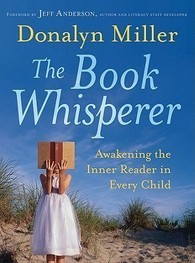 A fifth grade teacher in Forth Worth, Texas, Donalyn Miller, motivates her middle school students to read 40 or more books a year.
A fifth grade teacher in Forth Worth, Texas, Donalyn Miller, motivates her middle school students to read 40 or more books a year."I'm invited to speak in schools that want to improve their test scores, but the kids don't have books to read and parent volunteers run the library. They don't get it....
"...The manner in which schools institutionalize reading takes this love away from children. As instruction becomes limited to test-taking drill and kill, we are slowly strangling the joy of reading out of students, and without quality instruction in how to read well, we are narrowing their possibilities as readers forever," Donalyn says.
 Anthony Horowitz writes books that many boys devour. His series ALEX RIDER about a teenage spy has sold 12 million copies worldwide. Anthony says, "I can tell you if a school has a good library five minutes after entering it... It is in the eyes of the kids."
Anthony Horowitz writes books that many boys devour. His series ALEX RIDER about a teenage spy has sold 12 million copies worldwide. Anthony says, "I can tell you if a school has a good library five minutes after entering it... It is in the eyes of the kids." We didn't have a school librarian in my elementary school, but the public library was housed in our school building, and classes made regular trips down the hall to use it. Mrs. Orr, the librarian was one of the strongest pillars in my childhood. I wish every child had someone like her just down the hall.
Was there an important librarian in your life?
What can we do to help kids, especially boys, find something to read that will help instill a lifetime habit?
Published on June 26, 2014 21:07
June 20, 2014
The Story Behind the Poetry of Lady Liberty
 Replica of Liberty's Face
"Give me your tired, your poor,
Replica of Liberty's Face
"Give me your tired, your poor,Your huddled masses yearning to breathe free,"
My visit to the Statue of Liberty earlier this week inspired me to learn more about the woman who wrote those famous words. They really struck me, almost to tears when I first heard them as a child. I marvel at them again now, and at the power of poetry to move people’s emotions and stir them to action.
Where does such power come from?
The author of the words, Emma Lazarus was born in New York in 1849 to a wealthy Jewish family. Her ancestors were Sephardic Jews who fled the Spanish
Inquisition for Colonial America. Emma was a curious, bright girl who loved reading, and started writing poetry at a young age.
Living in 19th Century America, she had at least two strikes against her. She was a woman, and she was Jewish. However, her father fully supported her writing, and self-published her first volume Poems and Translations: Written Between the Ages of Fourteen and Sixteen.
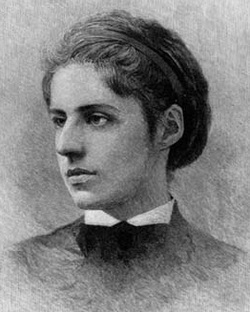 T. Johnson - The New York Historical Society At some point her poetry impressed Ralph Waldo Emerson and they began a long-term correspondence. In 1883, during the drive to raise money to build the pedestal for the Statue of Liberty, Emma wrote “The New Colossus”.
T. Johnson - The New York Historical Society At some point her poetry impressed Ralph Waldo Emerson and they began a long-term correspondence. In 1883, during the drive to raise money to build the pedestal for the Statue of Liberty, Emma wrote “The New Colossus”.She’d been hearing news of the vicious anti-semitic pogroms in Russia, and as Jewish refugees streamed into the U.S. from Eastern Europe, Emma was shocked. Poor, sick, and uneducated, they were nothing like her upper class New York social circle.
Many well-established Jewish Americans feared these immigrants would reflect badly on them and didn’t want anything to do with the newcomers. But Emma take a break from writing to help the Russian Jewish immigrants, giving of her own money and helping raise funds to feed and clothe them. She set up job training in the industrial trades, which grew into the Hebrew Technical Institute. And, she wrote poems and essays about their plight. "Until we are all free, we are none of us free," she said.
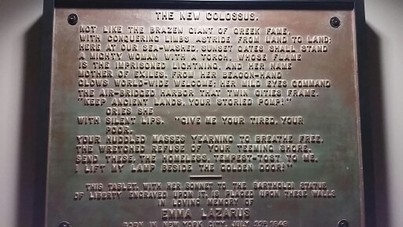
Throughout the 1870s and early 1880s, many of Emma's poems appeared in American magazines and newspapers, including the New York Times. Her poetic dramatization of Richard Reinhard's 1877 Der Tanz zum Tode, celebrated the courage and faith of 600 Jews who were killed, many burned to death, in Nordhausen, Germany, in 1349. The massacre was one of hundreds throughout Europe during the plague, where Jews were accused of causing the Black Death.
Emma’s writings also spoke to the importance of literature to culture and the needs and rights of the artist.
But none of her work became as well-known as the poem which is engraved in bronze at the Statue of Liberty. Once posted at the foot of the statue, it has since been moved inside for protection against the elements.
The New Colossus by Emma Lazarus
 Not like the brazen giant of Greek fame,
Not like the brazen giant of Greek fame,With conquering limbs astride from land to land,
Here at our sea-washed, sunset gates shall stand
A mighty woman with a torch, whose flame
Is the imprisoned lightening, and her name
Mother of Exiles. From her beacon-hand
Gloves world-wide welcome; her mild eyes command
The air-bridged harbor that twin-cities frame.
"Keep, ancient lands, your storied pomp!"
Cries she
With silent lips.
"Give me your tired, your poor,
Your huddled masses yearning to breathe free,
The wretched refuse of your teeming shore,
Send these, the homeless, tempest-tossed to me:
I lift my lamp beside the golden door.
Emma's poem gives me the shivers! It's message was never more important than it is today. Does it have any special significance for you? If so, I'd love to hear your story.
Published on June 20, 2014 09:31
June 12, 2014
Courage: Being Who You are Meant to Be
 Today, I'm thrilled to tell you about a new book, which is especially close to my heart because as a young woman in the early days of my career as a television news reporter, I briefly entertained the dream of working as a war correspondant.
Today, I'm thrilled to tell you about a new book, which is especially close to my heart because as a young woman in the early days of my career as a television news reporter, I briefly entertained the dream of working as a war correspondant. REPORTING UNDER FIRE:16 DARING WOMEN WAR CORRESPONDENTS AND PHOTOJOURNALISTS, by Kerrie Logan Hollihan, is filled with historical photos, newspaper clippings and personal stories from the women journalists themselves.
The publisher Chicago Review Press describes the women chronicled in the book who risked their lives to tell wartime stories:
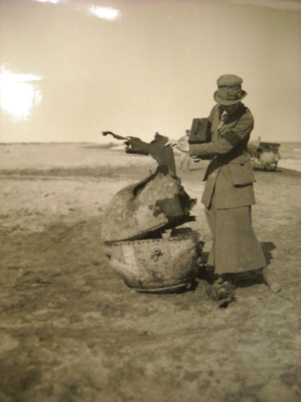 Each woman—including Sigrid Schultz, who broadcast news via radio from Berlin on the eve of the Second World War; Margaret Bourke-White, who rode with General George Patton’s Third Army and brought back the first horrific photos of the Buchenwald concentration camp; and Marguerite Higgins, who typed stories while riding in the front seat of an American jeep that was fleeing the North Korean Army—experiences her own journey, both personally and professionally, and each draws her own conclusions. Yet without exception, these war correspondents share a singular ambition: to answer an inner call driving them to witness war firsthand, and to share what they learn via words or images. Photojournalist Helen Jones Kirtland looking at a spent landmine,probably near Ypres, Belgium, 1919. (Library of Congress)
Each woman—including Sigrid Schultz, who broadcast news via radio from Berlin on the eve of the Second World War; Margaret Bourke-White, who rode with General George Patton’s Third Army and brought back the first horrific photos of the Buchenwald concentration camp; and Marguerite Higgins, who typed stories while riding in the front seat of an American jeep that was fleeing the North Korean Army—experiences her own journey, both personally and professionally, and each draws her own conclusions. Yet without exception, these war correspondents share a singular ambition: to answer an inner call driving them to witness war firsthand, and to share what they learn via words or images. Photojournalist Helen Jones Kirtland looking at a spent landmine,probably near Ypres, Belgium, 1919. (Library of Congress)
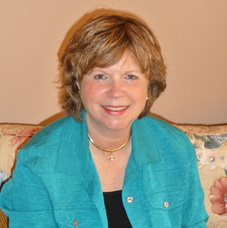 Kerrie Logan Hollihan The book just came out two weeks ago, and I'm so pleased to introduce you to Author Kerrie Logan Hollihan
Kerrie Logan Hollihan The book just came out two weeks ago, and I'm so pleased to introduce you to Author Kerrie Logan Hollihan My thanks to Mary for asking me to guest blog this week.
She asked me to focus on courage, which got me thinking about the sixteen women I profiled. At that point I realized I never especially characterize these women as courageous, though of course they are or were. Other attributes come to mind: smart, articulate, resourceful, brave, bold, brash, stubborn. But were I to choose a single adjective to best describe the women in my book, it would be:
Authentic.
Authentic. That’s the “keyword” I’d plug in for every one of them. Here’s how I explain my choice in the foreword to Reporting Under Fire:
When my daughter was a junior at [an all-girl high school], someone wrote a lovely quote on a poster during pep week. It was from Judy Garland…It said: “Always be a first-rate version of yourself, instead of a second-rate version of somebody else.”
… Garland’s words came to me as I was putting the finishing touches on this book. In looking over the profiles I’d researched and written over nearly a year, I was struck by how each of these of these women is (or was) so much her authentic self….
 To be authentic takes courage. To know who you truly are and to live your life acting on that self-awareness takes courage. You might be a war reporter who risks it all to do what you are called to do. Janine di Giovanni (now Middle East editor of Newsweek) “bears witness” to war’s impact on ordinary people. Sigrid Schultz was the first reporter to warn that Adolf Hitler was building concentration camps and isolating German Jews. Chicago Daily News reporter Georgie Anne Geyer was marked for death in Guatemala by the White Hand, ultra-right-wing terrorists.
To be authentic takes courage. To know who you truly are and to live your life acting on that self-awareness takes courage. You might be a war reporter who risks it all to do what you are called to do. Janine di Giovanni (now Middle East editor of Newsweek) “bears witness” to war’s impact on ordinary people. Sigrid Schultz was the first reporter to warn that Adolf Hitler was building concentration camps and isolating German Jews. Chicago Daily News reporter Georgie Anne Geyer was marked for death in Guatemala by the White Hand, ultra-right-wing terrorists. Or you might be a big city dweller like my daughter, grown up now, who sees how authenticity and self-awareness matter in the jobs and private lives of modern women, surrounded as they are by bottom-liners and bottom-feeders. How to live courageously and meaningfully in a lousy world. How to be a first rate version of herself.
Photo below: Correspondent Martha Raddatz (left) in Afghanistan, May 2011, Producer Ely Brown (right) Courtesy Raddatz
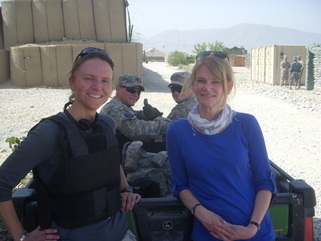 ABC Chief Global Correspondent Martha Raddatz is a case in point: smart, plain-speaking, and unpretentious. She told me she loved to read biographies as a kid, that “…maybe that’s the first inkling you want to live a life that’s not the one you’re living.”
ABC Chief Global Correspondent Martha Raddatz is a case in point: smart, plain-speaking, and unpretentious. She told me she loved to read biographies as a kid, that “…maybe that’s the first inkling you want to live a life that’s not the one you’re living.”Martha left college to take a news jobs -- something she doesn’t recommend to others. That was about forty years ago, and she’s been reporting ever since. She thrives on what she does, as she said in a talk at her son’s college. “The one reason more than any other that I love the news business is because I learn something every single day. Every single day.”
Martha Raddatz is the real deal, as is every single woman in my book. Authentic. Courageous.
Thank you, Kerrie. And thank you for writing an excellent and exciting book on this important and inspiring topic.
I appreciate the quote from Martha Raddatz because that is also one of the reasons I loved working in the news business, and part of why I'm so happy writing books for kids. I'm hungry to learn, and writing allows me to share the interesting things I learn.
For more on REPORTING UNDER FIRE, here's what School Library Journal has to say.
"A well-researched and riveting book...the text is chock-full of their daring exploits—such as Sigrid Schultz cohosting an engagement party for top Nazi Hermann Göring—all in the name of landing their stories. Not only do readers gain a healthy respect for each reporter, but they also gain insight into global history. As such, the book reads like a narrative time line of world history, women's rights, and the field of journalism as a whole."
This is the kind of book that should be in every school library. I'm calling my local district to see if they have it. I challenge you to do the same.
Published on June 12, 2014 13:50
June 5, 2014
It's Not Every Day You Meet Heroes Like These
 This past week I had the extraordinary privilege of speaking to WWII POWs surrendered on Bataan and Corregidor and held prisoner until the end of the war.
This past week I had the extraordinary privilege of speaking to WWII POWs surrendered on Bataan and Corregidor and held prisoner until the end of the war.Only a few of the men remain alive now, some seventy years after the war.

The POWs, their wives, children, friends and relatives gather each year to commemorate the sacrifice and service these men gave for our country. They endured starvation and torture on the Bataan Death March, in prison camp, hell ships and Japanese slave labor camps.
 Totally honored & thrilled to sign a book for Bataan Death Survivor Phillip Coon
Totally honored & thrilled to sign a book for Bataan Death Survivor Phillip Coon Mr. Coons, an infantry machine gunner in the army, was one of six Muscogee Creek members who fought in the Battle of Bataan and were forced on the Bataan Death march. Three of the men died in captivity. For more of Mr. Coon's story, click here.
The group of POWs that began meeting in the late 1940's has now morphed in to the Descendants Group--American Defenders of Bataan and Corregidor Memorial Society. One of the group's goals is to keep alive the story of these men's courage and resilience in the Philippines when the Japanese attacked the Islands shortly after bombing Pearl Harbor. They especially want to get the word out to young people. History books may touch briefly upon the subject, but stories from the survivors have more impact. That was Shayna Ross a student at Yamhill-Carlton High School in Oregon. I spoke with her at a Veteran's Day celebration where she heard first hand the experiences of American defenders of Bataan and Corregidor.
A new documentary on the topic was screened at the ADBC convention, Never the Same: A Prisoner of War Experience. Three-time Emmy Award-winning director Jan Thompson interviewed a number of POW's for the documentary. She also uses poems, songs and art work created by prisoners in the camps to help depict the brutality they experienced. You can view the trailer here.
And by the way, if you don't have your copy of PURE GRIT yet, Women's eNews published an excerpt this week. Read it here...
Up next week--> a new book featuring American women war correspondents.
Published on June 05, 2014 17:35
May 31, 2014
This is Intensified Living!
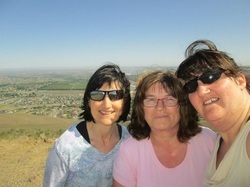 Badger Mountain, Tri-Cities, WA On my various road trips over the last month to promote my book, I've greatly enjoyed the different cities and communities I've visited. In each one I'd find myself proclaiming, "Oh, it would be so great to live here."
Badger Mountain, Tri-Cities, WA On my various road trips over the last month to promote my book, I've greatly enjoyed the different cities and communities I've visited. In each one I'd find myself proclaiming, "Oh, it would be so great to live here."In Tri-Cities, Washington, the hiking trail up Badger Mountain was terrific, as was the view from the top.The river is a beautiful green oasis snaking through the region. I found myself thinking, "It would be so great to live here and have access to this trail and this view."
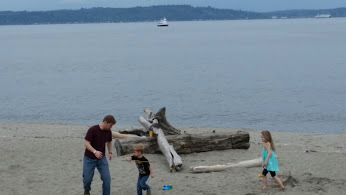 Alki Beach, West Seattle, WA
Alki Beach, West Seattle, WA In Seattle, I went for a walk on Alki Point and reminisced about when I used to live nearby and take my young son to play on the beach. It's also a great place to walk, run or cycle, with great views of the city and Puget Sound. Part of me wished I still lived there.
 View of Seattle from Alki Beach Trail
View of Seattle from Alki Beach Trail
 View from Chuckanut Drive Then came our visit to Bellingham, Washington, one of the most spectacularly beautiful places in the world, though I might be a bit partial to the region after growing up in Whatcom county, in the shadow of Mount Baker. Mike and I love to visit Fairhaven, an historic part of the city where we get lost for several days in the stacks at Village Books. Our Drive home took us along scenic Chuckanut Drive which overlooks Chuckanut and Samish Bays with views of the San Juan Islands.
View from Chuckanut Drive Then came our visit to Bellingham, Washington, one of the most spectacularly beautiful places in the world, though I might be a bit partial to the region after growing up in Whatcom county, in the shadow of Mount Baker. Mike and I love to visit Fairhaven, an historic part of the city where we get lost for several days in the stacks at Village Books. Our Drive home took us along scenic Chuckanut Drive which overlooks Chuckanut and Samish Bays with views of the San Juan Islands. Our current trip took us south and through Bend, Oregon, where we stopped at an Italian coffee shop, started wandering the streets and found a little courtyard just off the Deschutes River, where we sat in the sun and almost ended our trip right there it was so beautiful.
 Deschutes River
Deschutes River 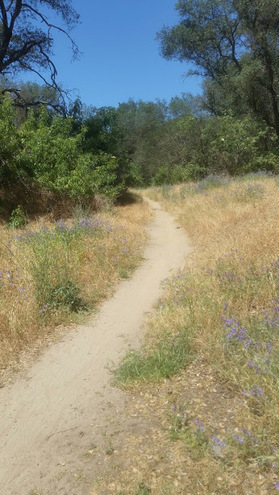 Trail along the American River, Rancho Cordova, CA A 14-hour day of driving brought us to Sacramento, California, and a visit to the home of relatives near the American River. Their home backs up to a trail for walking, running, cycling and watching wildlife. Out for a walk I saw a young deer, numerous wild turkeys and luckily, none of the rattle snakes who live there.
Trail along the American River, Rancho Cordova, CA A 14-hour day of driving brought us to Sacramento, California, and a visit to the home of relatives near the American River. Their home backs up to a trail for walking, running, cycling and watching wildlife. Out for a walk I saw a young deer, numerous wild turkeys and luckily, none of the rattle snakes who live there. Enjoying the lovely views, the atmosphere and people of all the places I've been visiting the past month or so, I couldn't help comparing them to where I live in Spokane.
Everywhere else seemed so fresh and exciting. Here, or there would be a great place to get out and exercise. This place or that would be so relaxing, so close to nature. Wow, what great restaurants and shops they have in this town.
It made me realize that I have come to take for granted the lovely views in my own city, the places to exercise not far from my front door, the opportunities to observer nature in my own backyard.
Rick Steves says travel is intensified living. And I have found that to be true on my recent road trips. It has opened my senses to the world around me and helped me more fully appreciate both the strange and distant and the well-known close up places.
Published on May 31, 2014 10:51
May 22, 2014
What you don't know about head injury...could kill you
 photo by Katherine Johnson Carla's 14-month-old son Corey fell off a swing in the back yard and died of a head injury. You want to think such a thing could never happen in your family, that it was a freak accident...
photo by Katherine Johnson Carla's 14-month-old son Corey fell off a swing in the back yard and died of a head injury. You want to think such a thing could never happen in your family, that it was a freak accident...But in reading Carla Killough McClafferty's book subtitled CONCUSSION AND FOOTBALL'S MAKE-OR-BREAK MOMENT, it's clear the risk of death and brain damage is higher than I ever imagined. Especially for kids who play football, but also for kids who play soccer or ride bicycles, or swing on swings...
Corey suffered a minor bump on the head the day before he fell from the swing. After he died, the doctor told Carla that the two falls were a factor in her son's death. But she didn't really understand what had happened until some twenty-five years later when she researched this book.
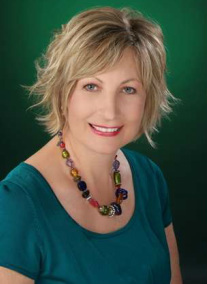 Carla Killough McClafferty "I studied what happens in the brain when one is a victim of Second Impact Syndrome or SIS. I understood in a different way exactly what happened in my son's brain in those minutes immediately following his fall."
Carla Killough McClafferty "I studied what happens in the brain when one is a victim of Second Impact Syndrome or SIS. I understood in a different way exactly what happened in my son's brain in those minutes immediately following his fall." "In the end, the research was much more personal than I thought it would be."
FOURTH DOWN AND INCHES tells of a Purdue University study of the Jefferson High football team in Lafayette, Indiana. The study showed brain impairment not just in the boys who suffered concussions during the season, but also in boys who suffered repeated hard knocks to the head, but never showed any signs of concussion.
"At first we thought the scanner was broken," one researcher said, referring to the boys' functional MRI test results.
 Before, during and after the 2009 season, the players underwent two tests. One measured how well they remembered words and shapes during a 20-minute test, as well as the speed and accuracy of their responses. MRI scans showed brain functions like thought, speech, movement and sensation.
Before, during and after the 2009 season, the players underwent two tests. One measured how well they remembered words and shapes during a 20-minute test, as well as the speed and accuracy of their responses. MRI scans showed brain functions like thought, speech, movement and sensation. When the before and after test results were compared, four boys who experienced lots of hard impacts to the head (as measured by an accelerometer in their helmets) but no concussions, showed the same neurological changes to the brain as three boys who had been diagnosed with concussion during the season.
The risk then, for these players of suffering SIS is huge. A player might sustain a life-altering injury without showing any outward sign.
A different study at Virginia Tech study is that the helmet accelerometers showed they young boys experienced impacts of the same severity of force as high school and college players. One hit was so hard, it would be like running into a brick wall at 20-miles an hour.
Carla says her book is not an attack on football. The reality of repetitive head trauma is balanced with love of the game.
"In FOURTH DOWN, I present the facts, then leave the reader to draw their own conclusions. The point of the book is to look at the cutting edge research on concussions and head injuries and how these issues affect people. I address recognizing a player with a concussion and what the experts say they should do after a concussion. My hope is that the book will inform young athletes about the issues so they understand why they shouldn't ignore symptoms of concussion."
Along with the danger of SIS comes the specter of Chronic Traumatic Encephalopathy or CTE, which boxers commonly suffer and has recently been diagnosed in some pro-football players.
CTE can be diagnosed only after death and has been discovered in the brains of men who died and donated their brains to science. CTE is irreversible and progressive brain damage that results from repetitive brain trauma.
When a teenage rugby player died in 2006 after a concussion, his parents donated his brain for study. Scientists were surprised at what they found--the first evidence of CTI suffered by a teenager.
Delving into the personal side of the science of head injury was not easy for Carla, but she says, "The emotional cost of writing this book is worth if even one athlete tells a coach that he might have a concussion and does not return to play too soon, risking second impact syndrome."
"I don't think I'm courageous at all. I was willing to go where the research took me. The book allowed me to get to know the parents of Nathan Stiles and Eric Pelly, both teen athletes who lost their lives as a result of concussions. As they shared with me the lives and deaths of their children, I grieved with them and for them. Although Corey has been gone for more than 25 years, his loss is always with me and times like this bring it back to me with fresh pain."
FOURTH DOWN AND INCHES: CONCUSSIONS AND FOOTBALL'S MAKE-OR-BREAK MOMENT by Carla Killough McClafferty received a starred review in Publishers Weekly, selection by the Junior Library Guild and the ALA YALSA Nominee List for 2014 Nonfiction Award.
Top photo thanks to Katherine Johnson https://www.flickr.com/photos/aka_kath/
Published on May 22, 2014 22:02



